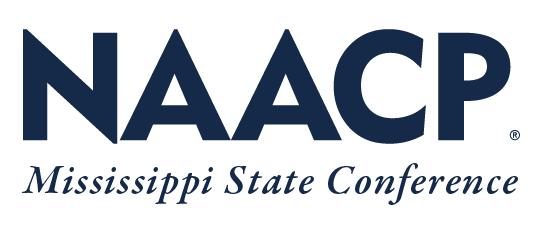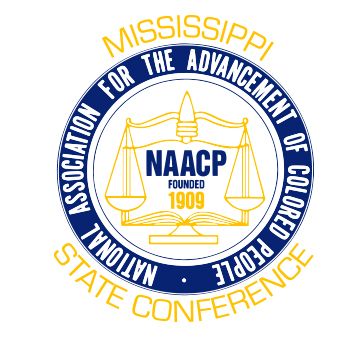When Minority Students Attend Elite Private Schools
2013/12/17 – Many parents of color send their children to exclusive, predominantly white schools in an attempt to give their kids a “ticket to upward mobility.” But these well-resourced institutions can fall short at nurturing minority students emotionally and intellectually.
Dalton is a prestigious, decades-old, K-12 prep school on New York City’s Upper East Side that filters its students into the best universities in the country. In 2010, Forbes reported that 31 percent of its students matriculated into MIT, Stanford, or an Ivy League institution. Former students include Anderson Cooper, Claire Danes, and Ralph Lauren’s daughter Dylan. Even imaginary people make sure their families are present for parent-teacher conferences. For years, however, Dalton was largely inaccessible to minority and lower-income students. Maintaining its reputation as a top-tier place of learning did not require administrators to extend invitations to those groups.
When Idris Brewster and his friend Seun Summers entered kindergarten at Dalton in the late 1990s, they were one of the few students of color in their class. Idris and Seun’s parents believed that getting into Dalton was the first step to a life filled with accomplishments.
“Students that came out of independent schools were well-prepared on the level of networking, internships, job and school opportunities—you name it—and we were offered great financial-aid incentives,” Michèle Stephenson, Idris’s mother, told me. “We thought this intensive, intellectually stimulating institution would open doors for Idris and take him anywhere he wanted to go.”
Fourteen years later, Idris’s parents have released American Promise, a documentary that records the boys’ personal and academic experiences from kindergarten through senior year of high school. The film reveals a hard truth about being a student of color at an elite school: Simply being admitted doesn’t guarantee a smooth or successful educational journey.
At the beginning of American Promise, the boys’ parents are filled with hope about their sons’ new school. As the film progresses, though, they become less certain of Dalton’s ability to improve their sons’ lives.
They realize that, as Michèle phrases it, Dalton’s “ticket to upward mobility” often came at a cost to their kids’ success and self-esteem. “We understood that this was a school that the ‘1 percent’ sent their children to,” Michèle says, “but not having grown up in that environment, neither of us understood the extent to which the social and emotional sides of our child’s development would be at stake.”
According to Myra McGovern, senior director of public information for the National Association of Independent Schools, more independent schools are becoming invested in how diverse environments should feel, rather than only concentrating on what they should look like. Likewise, more parents of color are discovering alternatives to public school that seem stable in the face of rapidly transforming neighborhoods and school systems.
“Initially, in the 1960s and ’70s there was a greater push to just integrate and assimilate,” McGovern says. “It wasn’t until the late ’70s and ’80s that diversity became less about numbers, and more about having a community that was inclusive and drew strength from the diversity of the student body.”
Today’s parents have grown up in a more diverse country than the previous one, she adds, and are specifically seeking out communities for their children that are similarly diverse.
I’d argue, though, that parents of color aren’t compelled by “diversity” as much as they are by reality.
Independent school administrators may be invested in preparing white students for an increasingly multicultural future (or multicultural present, since children of color now outnumber non-Hispanic white children). But parents of color like the families in American Promise are more concerned with ensuring their kids’ success in the still predominantly white spaces of the present. The job market is obviously strained for everyone, however, it continues to be remarkably stratified by race. Rather than waiting for their kids to deal with that reality in adulthood, many minority parents would prefer that their children get a head start when they are young thinking, as Seun’s mother Stacy does in one scene ofAmerican Promise: “I want Seun to be comfortable around white folks because at this point, I am not comfortable around white folks.”
The cultural transition into the independent school setting can be just as difficult for adults as it is for their children. Until fairly recently, the perception of independent schools as cold, elitist, and inaccessible hindered administrators’ ability to attract capable, non-traditional families. At best, recruiters seemed to be shadowy benefactors that plucked bright, dirt-smudged waifs from their humble origins and placed them in stately institutions where children might, in the style ofGreat Expectations, become less “common.” (You can almost hear the croaking echo of some horrible schoolteacher shouting “Play! Play!” at a poor brown child.) Administrators tended to reach out to social and professional networks that already mirrored the backgrounds of the existing student bodies, almost exclusively courting, for example, children at prohibitively expensive nursery schools.
In recent years, though, Dalton has done more than many schools in its arena to extend itself beyond the old parameters. It made headlines in 2011 after announcing that 47 percent of the incoming kindergarten class that year was comprised of students of color: 24 percent multiracial, 11 percent black and Asian each, and one percent Hispanic—compared to a New York City independent school average of 29 percent total.
Alumna and head of school Ellen Stein says that when American Promise started, her school was at the “very early stages of our efforts to be an intentionally diverse” place that mirrored the variety of New York. She defines “diversity” as not only racial and economic, but also religious, geographic, professional, and by style. Administrators have fulfilled these expectations by reaching out to a variety of nursery schools in the city—rather than focusing on well-established favorites—as well as contact an array of churches and afterschool programs.
Lisa Waller, the head of upper school, adds that the parents of African-American children have executed a “tremendous sweep in terms of reaching out to their peers and neighbors,” and have helped to plan popular, longstanding events have that allowed families to get a better sense of life at Dalton. Staff turnover is much less frequent than student turnover, and some parents might wish for more diversity among faculty, but Waller says the school has changed its routines to allow for better communication. For example, pushing events later in the evening means longer days for people who work in the school but, unlike morning meetings, “guarantees the broadest amount of participation” for members of the parent body who need to be at work earlier in the day, or need more time to arrange childcare.
Still, until fairly recently, minority children who entered independent schools weren’t engaging with already-diverse environments as much as creating diversity simply by being present. In the sixth grade, when another student told me to “run like the KKK was chasing” me to get a good time on the mile-run fitness test, I had to choose between exploding at her, trying to educate her (one 12-year-old to another), or finding someplace calm inside myself so that I could walk away. I walked away—and I hated myself for it. But I also understood that for many of my peers who had gone to the school for years, I was one of the first, unquestionably racially distinct people their age that they had interacted with on a daily basis. My parents or outside friends wouldn’t be there to help me through it, even if they wanted to be, and I didn’t trust my teachers and advisors to address these issues honestly and directly without catering to the other girls (many of whom who seemed naïve, even to me), or their parents (who paid full tuition).
Ronnette, who attended Packer Collegiate, a co-ed K-12 school in Brooklyn, told me she also walked away when a white student told her to “go back to Darfur” in seventh or eighth grade. Although Ronnette was dubbed the “Queen of Diversity” for writing about her experiences in the school newspaper, she says that she “didn’t necessarily want to be the advocate or ‘martyr'” she was portrayed to be. “I would much rather have kept a low profile and been a friend or mentor to younger Prep and minority kids,” she explains. “But for me, my frustration was making sure I did the work in the classroom rather than being upset about percentages.”
Entering Packer at as a teenager with outlets to alternative environments made Ronnette’s transition somewhat easier, as it did for me. When he is young, Idris plays basketball at a Harlem league but is called a “white boy” by peers, and called out for code-switching—changing the way he speaks and the vernacular he uses—by his parents. But Ronnette and I had deeper, more extensive relationships with peers outside of Packer and Chapin. After all, we had attended elementary and middle school elsewhere.
The difference age makes is evident in Ronnette’s immediate family; her sister attended Packer from kindergarten through fifth grade “until the school started to scapegoat her blackness”—blaming academic or social difficulties to her race. Ronnette attributes this to her sister’s age. “Lower schools struggle because one, the age group doesn’t have the vocabulary to express themselves and, two, the administrators are scared to offend.”
See the trailer for American Promise at the link as well.
Source: Judith Ohikuare
The Atlantic



